5000
GEMET keywords
Type of resources
Available actions
Topics
INSPIRE themes
Keywords
Contact for the resource
Provided by
Years
Formats
Representation types
Update frequencies
status
Scale
-
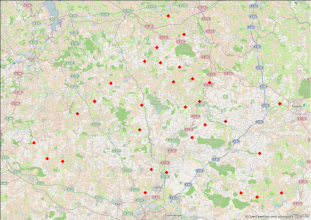
Objectif : Étude de l’effet de l’hétérogénéité de la mosaïque des cultures sur les communautés de plantes Protocole : Inventaire le long d’un transect en bordure et au centre de parcelles agricoles Article de référence : Alignier, A., Solé‐Senan, X. O., Robleño, I., Baraibar, B., Fahrig, L., Giralt, D., ... & Batáry, P. (2020). Configurational crop heterogeneity increases within‐field plant diversity. Journal of Applied Ecology, 57(4), 654-663. Programme de Recherche : ERA-Net BiodivERsA, Farmland
-
Objectif : Etude de l’effet de l’hétérogénéité de la mosaïque des cultures sur le service écosystémique de pollinisation Protocole : Dépôt de plants de radis en fleurs en bordure de parcelle, laissés libres à la pollinisation ou non, puis récolte et pesage des graines Article de référence : Landscape configurational heterogeneity by small-scale agriculture, not crop diversity, maintains pollinators and plant reproduction in Western Europe, Annika L. Hass, Urs G. Kormann, Teja Tscharntke, Yann Clough, Aliette Bosem Baillod, Clélia Sirami, Lenore Fahrig, Jean-Louis Martin, Jacques Baudry, Colette Bertrand, Jordi Bosch, Lluís Brotons, Françoise Burel, Romain Georges, David Giralt, María Á. Marcos-García, Antonio Ricarte, Gavin Siriwardena and Péter Batáry. Proceedings of the Royal Society London B, 14 février 2018. DOI : 10.1098/rspb.2017.2242 Programme de Recherche : ERA-Net BiodivERsA, Farmland
-
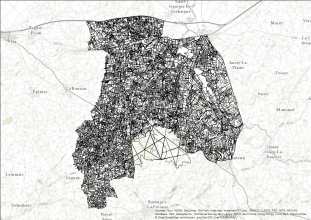
"Relevés floristiques sur les 3 mini-réseaux (A, B et C) de la Zone Atelier de Pleine-fougères suivant un référentiel de 42 espèces" Relevés en présence/absence de 42 espèces floristiques (espèces du référentiel Ecobordure) dans les bords de champs des 3 mini-réseaux bocagers de Pleine-fougères Protocole: transect de 25m placé au niveau d'un tronçon homogène du bord de champ
-

Relevés phyto-sociologiques sur les bas-marais du Couesnon Voir : LANOÉ, E., 2008. Diagnostics phyto-écologique et paysager des marais de la basse vallée du Couesnon et de leur rôle fonctionnel potentiel en terme d’accueil de l’avifaune. Mémoire de master, Université de Rennes 1, Rennes, 42 p.
-
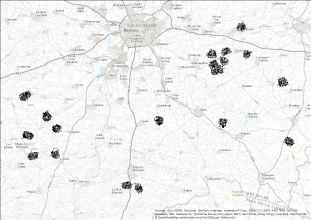
"Relevés de carabes aux interfaces entre parcelles cultivées et leurs bordures (sud Ille et Vilaine) - ZAAr" Objectif : étudier les flux et l'activité-densité associée des carabes entre cultures de différente nature (céréales d'hiver et maïs) et avec leurs bordures (haies), réparties dans 15 interfaces de cultures au sud de l'Ille et Vilaine. Protocole : échantillonnage des espèces et de leurs abondances (ou activités-densités) dans les parcelles et leurs bordures par piégeage, avec 2 stations de piégeage par parcelle et 2 stations de piégeage par bordure de champs (2 pots par station) ; échantillonnage des flux de carabes aux interfaces entre parcelles et entre parcelles et leurs bordures avec des pièges à interception (4 pots par piège à interception) ; pièges ouverts en continu et relevés toutes les 2 semaines pendant 8 semaines au printemps et pendant 4 semaines à l'automne. Programme de financement : projet DIVA AGRICONNECT Martel, G., Aviron, S., Joannon, A., Lalechère, E., Roche, B., & Boussard, H. (2017). Impact of farming systems on agricultural landscapes and biodiversity: From plot to farm and landscape scales. European Journal of Agronomy.
-

Cartographie au 1:5000 réalisée par traitement automatique de données LiDAR dans le cadre du programme de recherche Zone Atelier.
-

95 relevés tarière pour déterminer le caractère hydromorphe ou non du sol en surface (-40 cm) et ainsi participer à la délimitation des zones humides.
-
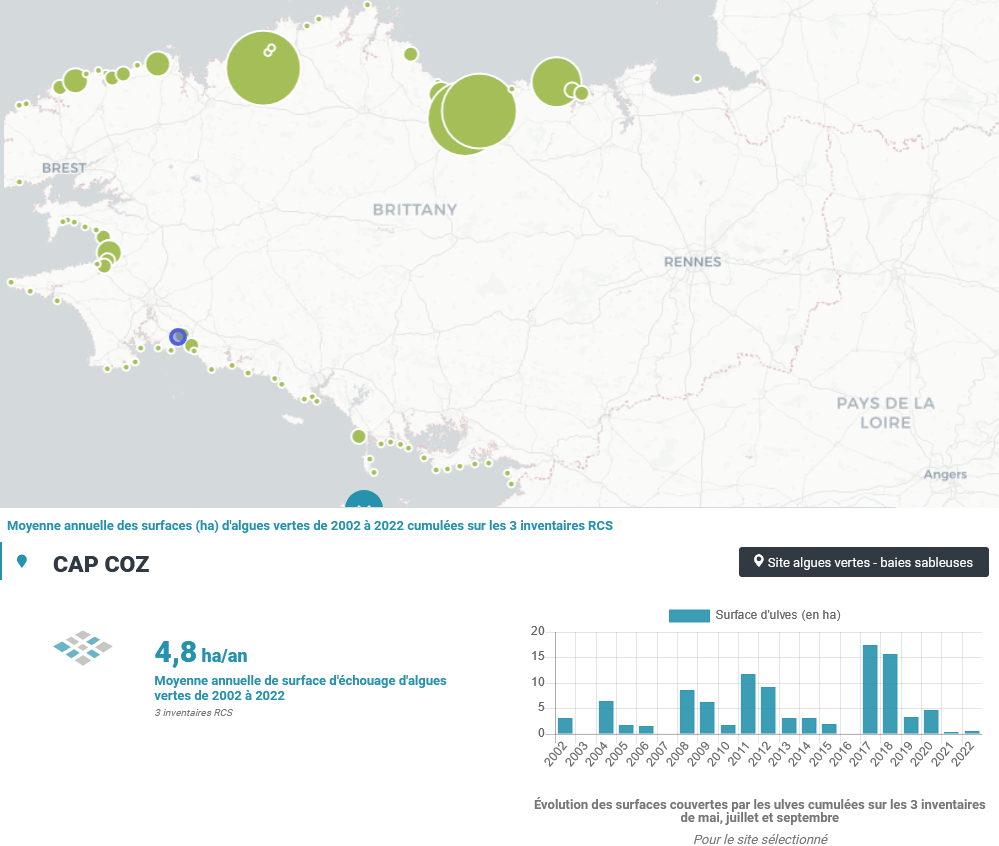
Le CEVA a été chargé, de 2002 à 2006, de la mise en place puis de la réalisation du suivi du phénomène de « marées vertes » à l’échelle de la Bretagne, dans le cadre du programme Prolittoral, programme régional et interdépartemental de lutte contre les marées vertes (financement de l’Agence de l’Eau Loire Bretagne, du Conseil régional de Bretagne et des quatre Conseils généraux bretons). Dans ce cadre, le CEVA a développé des outils spécifiques pour évaluer le phénomène et son évolution. Ces outils ont été élaborés en partant de la connaissance du phénomène acquise au travers des suivis antérieurs, réalisés pour le compte du Conseil général des Côtes d’Armor, de l’Agence de l’Eau Loire Bretagne et de collectivités locales bretonnes particulièrement touchées par le phénomène. Depuis 2007, le CEVA réalise les inventaires de marées vertes du Réseau de Contrôle de Surveillance (RCS) dans le cadre de la Directive Cadre sur l’Eau (DCE) pour l’évaluation des masses d’eau côtières et de transition, financée par l’Agence de l’Eau Loire Bretagne. Trois survols sont réalisés chaque année (mai, juillet, septembre) de l’ensemble du littoral (du Mont Saint Michel à l’île de Ré) faisant l’objet de l’acquisition de photographies aériennes à partir desquelles des surfaces d’échouages d’ulves sont mesurées. Pour les sites de type « sableux » classés « site à échouage d’ulves », l’estimation surfacique des échouages d’ulves en lame est réalisée pour chaque inventaire. Pour les sites de type « vaseux » marqués par un tapis continu d’algues vertes, toutes les surfaces couvertes par les algues vertes (filamenteuses ou en lames) sont estimées uniquement pour l’inventaire présentant un maximal annuel de biomasse. Cela fait suite à la mise au point des grilles de classement européennes de la DCE des masses d’eau de type « abritées » (vasières) en 2008.
-
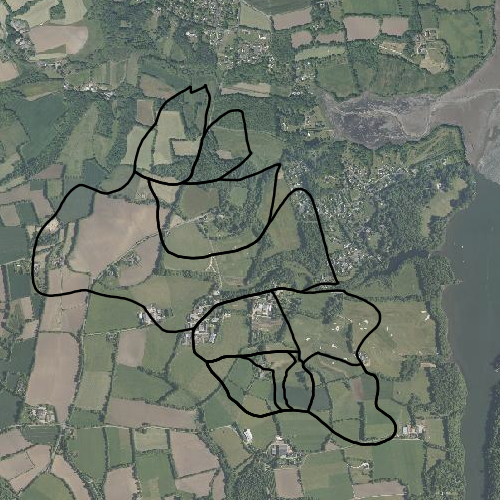
Représentation des contours de sous bassins versants de la zone d'étude INRA de Kerbernez. Le site comporte cinq sous bassins versants (Puits, Coat Timon, Ty Garde, Pont Lenn et Nead Meur). Le bassin du Puits est lui même divisé en trois sous bassins (Kerbernez, Kerrien et Guerveur). Le tracé des contours a été réalisé à partir de la carte IGN au 1/10000ème et des observations topographiques du terrain (NICOLAS. J.M., 1991). Ces contours ont été affinés par de nouvelles observations sur le terrain et reportés sur planches cadastrales au 1/2500ème (CHATELIER. J.M., 1995). Un calque des contours a ensuite été géoréférencé puis scanné (ABIVEN. S., 2000). A partir de ce calque l'image a été vectorisée sous QGIS et approuvée par Laurent RUIZ. Le sous bassin de Kerrien a été divisé en trois unités à partir d'un modèle numérique de terrain réalisé par le Lycée Agricole de Kerbernez (2006).
-

Communautés de prédateurs (carabes et araignées) en paysage agricole, Ille et Vilaine (2013-2014): Objectif : Étude de l’effet de l’hétérogénéité de la mosaïque des cultures sur les communautés de prédateurs (carabes et araignées) Protocole : Échantillonnage par pièges à fosse (Barber) en bordure et au centre de parcelles agricoles Article de référence : Bertrand, C., Burel, F., & Baudry, J. (2016). Spatial and temporal heterogeneity of the crop mosaic influences carabid beetles in agricultural landscapes. Landscape Ecology, 31(2), 451-466. Programme de Recherche : ERA-Net BiodivERsA, Farmland
 OSURIS
OSURIS